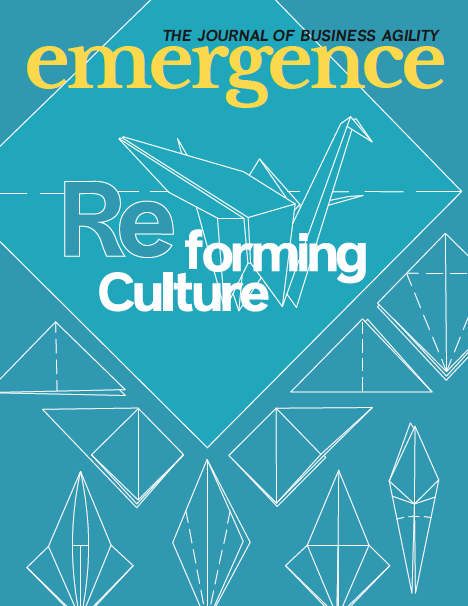Curing Culture Cancer
Positive Work Culture or Curing Your Culture's Cancer?
One year ago, my mother of 86 was diagnosed with an acute form of leukemia. I had no idea that leukemia was so prevalent in seniors as I was more familiar with it as a childhood disease. My mother battled mightily for six months, but ultimately succumbed to the deterioration of her healthy blood cells, caught pneumonia in her weakened state, and passed away rather quickly.
While my mother really never stood a chance against such a destructive force, I learned something about cancer that I hadn’t known before. Doctors have hundreds of treatments for cancer patients, but none of them were available to my mother. Why was that the case? Was it her age? Gender? Health Coverage? Cost? Severity of disease? Yes, to all of these and more.
Contrary to what we hear in the news, there will not be “a” cure for cancer because there is not “a” cancer. Rather, there are over 200 cancers categorized into several primary types based on where they start. My mom had leukemia, which is cancer of the blood. However, there are also carcinomas, which begin in the skin or the cells that line internal organs; sarcomas which begin in the connective tissues; lymphomas and myelomas which begin in the immune system; and brain and spinal cord cancers that originate in the central nervous system. Within each of those, there are further classifications. Cancer is a diverse disease!
Thus, because of the complexity and variations in cancers, the solutions are also just as complex and varied. The hundreds of treatments not available to my mother were not simply due to her type of cancer, but also her DNA. Many of the targeted treatments now available are tuned to particular DNA patterns they exclusively work within.
Positive Work Culture
Seeking “a” positive work culture is akin to finding “a” cure for cancer. As we’ve seen, there is no “one-size fits all approach”. Rather, we need to be targeted and specific in our approach, so let’s look at three key variables to this equation:
The word “positive”
“Positive” has many definitions, including the presence of features or qualities, an optimistic outlook, a clear and definite state, a quantity greater than zero, and so on. So what does it mean to have a positive work culture? What qualities are considered positive in work culture—friendly, innovative, predictable, results-oriented, or maybe some combination or all of the above?
The word ”work” or ”organization”
Every organization in the global economy has a unique makeup or DNA sequence. They function in different industries with different purposes, have different ownership and stakeholders, operate in different countries, and serve different markets, and so on.
The word “culture”
Culture has as many definitions as there are experts studying it. William Schneider says culture is “what we do around here to succeed”. Edgar Schein defines culture in layers from the beliefs of its members, guiding a set of values and norms they live by that become visible through artifacts and interactions. Culture is quite an elusive term.
So just as my mother was ill-suited to be treated with various cancer treatments due to her specific type of cancer, her DNA, and her environment, developing a positive workplace culture is as unique as the organization’s definition of “positive”, its DNA, and its culture. Each organization needs targeted treatments for its specific cancers.
Curing Culture Cancer
Let’s explore what leaders can do to build a more positive work culture given the complexity outlined above. Throughout each step, we’ll look at how a Northern Ireland regional division of a global bank created a more positive work culture through better understanding, aligning, and addressing their DNA, culture, and cancers.
Step 1: Education & Ownership
While doctors can diagnose and treat diseases, for the best possible prognosis, patients—and their advocates—have a responsibility to educate themselves on their condition and the health and lifestyle choices that impact disease progression. This is true with leaders and their organizations as well. Leaders who rely solely on outside counsel and consulting assistance for diagnosing and treating their culture cancers, without embracing their own responsibility, are likely to continue the very thinking and behaviors that led to culture problems in the first place—making any treatments temporary at best.
Leaders who take the time to better understand their culture, their cancers, and potential treatments are more likely to help identify and support lasting cures, ultimately fostering a more positive work culture.
In our example, the Northern Ireland senior leaders (C-Suite and Vice Presidents) took personal ownership of their education and spent two full days together to better understand their culture, DNA, and cancers. In fact, a key statement emerged from the group—“our board of directors needs to learn this too”. Yes, senior leaders also have reporting lines and “bosses”. However, their engagement was key to being part of the solution as much as part of the problem. Employees within the organization were inspired knowing leadership was taking their own “medicine”, rather than just passing responsibilities.
Step 2: Diagnosis & Awareness
The next step beyond taking personal leadership responsibility for culture cancers and potential cures is to better understand the type of cancers, and the DNA of the organization in which it lives. Just like cancers can be classified based on their root source, culture cancers can be classified based on the values they most align with.
- Results cultures are driven by objectives and stretch targets. They may develop cancers of toxicity; an intensity that leads to burnout.
- Risk cultures are driven by autonomy and innovation. They may develop cancers of anarchy; a freedom that leads to chaos.
- Rule cultures are driven by predictability and efficiency. They may develop cancers of bureaucracy; an abundance of structure leading to rigidity.
- Relationship cultures are driven by connection and collaboration. They may develop cancers of mediocrity; where friendships lead to a lack of accountability.
Each of these cultures and their cancers are not only singular within an organization, but may band together in combination or attack an organization’s parts—locations, business units, departments, functions, etc.—separately, making diagnoses and cures difficult to identify and apply. The more leaders can understand their cultures and expose their cancers—not only at a macro level, but also in its parts—the better equipped they will be to address them.
In 2018, 18 months prior to the pandemic, our Northern Ireland division ran a culture and values survey which helped diagnose their DNA and potential cancers. Leaders and employees both recognized bureaucracy cancers were likely present in a banking industry rules-based culture. However, they dis-agreed on the spread of that cancer, and its impact on autonomy and innovation. These differences opened the dialogue between leaders and employees to better develop treatments towards a more positive work culture.
Step 3: Alignment & Direction
The third step is alignment and direction of treatments. The typical problem with this step isn’t the execution of treatments, it’s that leaders jump to treatment too soon, leading to many mistreatments. Not only do mistreatments fail to help, they waste precious time, and erode confidence in the organization that is required for treatments to work.
A rowing crew team propels their boat using oars. In the larger boats with four to eight crew members, the speed of the boat is driven from two key factors. First, is the strength of each crew member, followed by the synchronization of their rowing. Stronger members and a better alignment both lead to a faster boat. The largest boats also have a coxswain, the person who controls the boat’s steering, speed, timing, and fluidity—in other words, the coxswain’s job is to align the boat and its crew members.
Organizations are super-sized boats, and while an organization can improve its speed through the strength of its employees, most organizational improvement is driven through alignment, or reduction of misalignment. Many culture cancers arise through the misalignment of the employees.
Misalignment emerged from the diagnosis of the Northern Ireland Bank Division. While leaders and employees agreed on how a bureaucracy culture was stifling their culture, they disagreed that a toxicity cancer was also present. Employees identified this cancer and brought it to the attention of leaders who were blind to it. This led to another key dialogue about the need for more relationship and team-oriented treatments to foster a more positive work culture, which further inspired new directions. It is not uncommon for cancers to be felt or seen in one part of an organization, yet blind to another.
Step 4: Inspect & Adapt
Just as my mother’s treatment was not resolved upon first diagnosis and scheduled treatments, an organization’s culture cancer will not be treated through initial alignment and direction. My mother continued to be checked, required frequent blood transfusions, and doctors began experimenting with a secondary treatment upon learning the first was not as effective as they had hoped. This treatment had just begun as she caught pneumonia, and thus was unable to fully take effect.
Leaders should not expect that a more positive work culture will take place upon a single treatment or even after months of treatment. Treatments take time, focus, re-inspection, and adaptation to impact culture cancers and begin to foster a more positive work culture.
I often use the term “marginal gains” when working with leaders. This means that change happens in the micro, and achieving macro progress requires ongoing investment over time of micro gains. Similar to how financial investments may only achieve a small percentage growth each year—or some-times lose money—but over a handful of years with continued reinvesting, those investments multiply.
Our Northern Ireland leaders had experimented with a number of changes, from team-based projects to empowering decision-making at lower levels to creating more project transparency and honesty. In the spring of 2020, 18 months following their first diagnosis and just as the global pandemic emerged, they had a health checkup with another culture cancer assessment. Unlike my mother’s follow up tests, their results were quite positive.
Their primary bureaucratic cancer had been put into remission, enabling more autonomy and innovation within their projects. However, an additional learning emerged as well with this cancer. The original cancer had not proven to be as far reaching as they originally perceived. Over the course of discourse and dialogue, they relearned about the importance of regulatory bureaucracy as it relates to governance. Their need to balance this with innovating risk taking was key.
Their secondary toxicity cancer was also reduced. Their team-based experiments were enabling better relationships and cross-functional silo breakdowns, which helped to connect various parts of the bank in addressing key business objectives. All in all, their efforts in treating their cancers was generating a more positive internal work culture that was also beginning to impact their external business performance.
Doctor’s Notes
As a culture cancer doctor, I am hopeful that our research will continue to identify new treatments for organizations. I am also concerned that cancers are advancing faster than our research. The global pandemic demonstrated how quickly organizations can treat their cancers, if they possess the focus and investment to do so. However, we more often see distracted leadership seeking miracle treatments without visiting the doctor for help with diagnosis, treatment, and ongoing maintenance to foster more positive work cultures.
This content was originally published in the September 2022 Edition of Emergence, The Journal of Business Agility. It has been republished here with the permission of the publication.
What is Emergence?
Emergence is the Journal of Business Agility from the Business Agility Institute. Four times a year, they produce a curated selection of exclusive stories by great thinkers and practitioners from around the globe. These stories, research reports, and articles were selected to broaden your horizons and spark your creativity.








